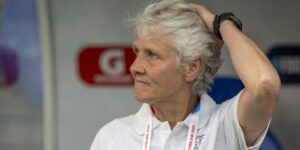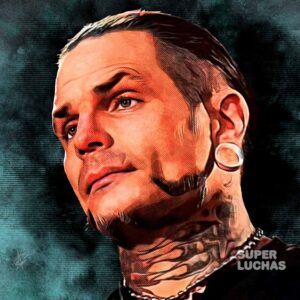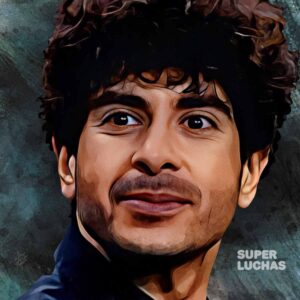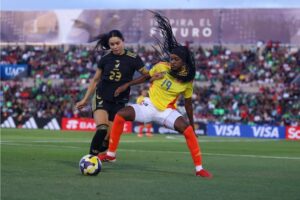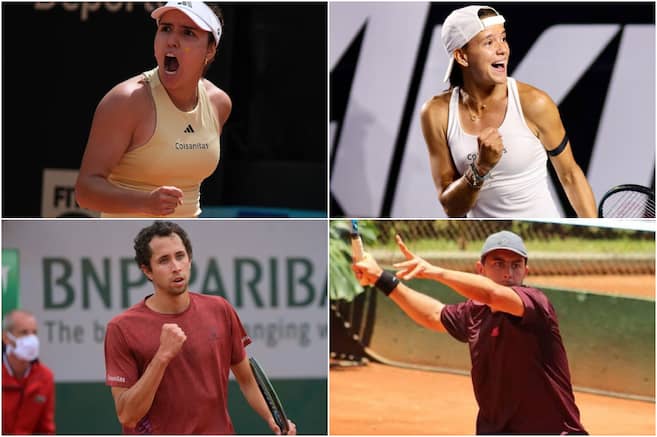

Colombian tennis players María Camila Osorio, Emiliana Arango, Daniel Galán and Andrés Urrea.
Photo: Colanity
Summary and Fast Informame
Listen to this article
Audio generated with Google
In a country where football dominates headlines and cycling continues to forge champions, little by little tennis has gained ground. Thanks to the effort and discipline of its practitioners, Colombia has built a respectable trajectory in this sport, backed by historical figures such as Fabiola Zuluaga, Mariana Duque, Catalina Castaño, Alejandro Falla, Santiago Giraldo, Juan Sebastián Cabal and Robert Farah, who finally opened the way in international circuits, after the precursors Jairo Velasco, Iván Molina and Mauricio Hadad, among others.
Today, that tradition remains alive with a new generation of tennis players who have managed to position themselves in the most demanding tournaments in the world. María Camila Osorio and Daniel Galán are proof of this. They have shown that with constancy, tactical and mental work, it is possible to compete in scenarios such as Roland Garros or Wimbledon.
His presence in the World Top 100 not only reflects his sports level, but also the high degree of personal sacrifice that involves representing Colombia in a highly competitive sport.
A race that is forged from childhood
The formation of a high -level tennis player begins from an early age, when discipline becomes an essential part of the day to day. In Colombia, this process implies training with constancy in many times unequal conditions: not all children have access to qualified coaches, courts in good condition or important tournaments.
In this road of high demand, talent alone is not enough. Economic conditions also play a determining role in the future of an athlete. That is explained by Jhan Fontalvo, a journalist specialized in tennis: “These are two conditions that have to occur: first, that there is an athlete who plays well to tennis, and second, who has money to be able to meet that goal. If you do not have any of the two things, nothing will happen with that athlete.”
In the case of Samuel Linde, 17, the results reflect the technical and family accompaniment he has had, but they also show how uncommon that support is. He is already in Ranking ATP to get his first points at the Challenger of Cali. He has managed to classify main tournaments in Paraguay, Mexico and Chile. “All I achieve is for the people who believe in me. It is not easy, but it is worth it,” said the now Colsanitas team after one of his most recent competitions in South America.
The beginning of a tennis player's career is decisive. Those who do not have continuity in their development between 10 and 14 years hardly reach the level to support the requirement of the professional circuit. In that sense, more than talent, what makes the difference is the constancy in work, access to well -structured processes and the possibility of competing internationally from an early age.
The importance of training methods
For a professional tennis player each day is planned and covers aspects that go beyond the game on the court. The daily routine includes physical preparation sessions, technical and tactical practice, video analysis, mental exercises and recovery protocols from a very early age.
Andrés Urrea is a player born in Mexico City but represents Colombia from a young age. His career has been built especially in the doubles modality, in which he has achieved several important titles, such as the Bogotá 2022 Challenger with Nicolás Mejía. His best ATP ranking in doubles has been 239 position, while in individuals he reached 1081.
With respect to his process he comments how he has grown in tennis: “Always by the hand of my parents and my friends, they have been a fundamental part of a process of many sacrifices that I have had to do. Obviously, spend many weeks away from home, and I think that as a better plays, more time has to pass far, because it is more the demand and the amount of tournaments that you have to play a year.”
According to the Colombian Tennis Federation, a routine training session can last about four hours. Planning must balance loads, rest, intensity and the amount of training carried out every day, without neglecting basic education and family time.
Food is a fundamental pillar in the performance of a tennis player. A balanced diet, rich in carbohydrates to maintain energy and proteins to facilitate muscle recovery, allows sustaining the demanding rhythm of training and competition.
At the same time, mental training is a key tool in high performance. Strategies such as visualization, concentration and repetitive routines before each point help control the pressure and keep the focus. These practices strengthen the player's confidence, making a difference in decisive moments within the game. Daniel Galán, for example, has a characteristic gesture of moving his doll and adjusting his handle before each point, to encourage.
The pride of representing Colombia
Beyond the titles and ranking, there is a constant motivation for competing representing Colombia. For many tennis players, taking the national flag to tournaments such as the US Open or Roland Garros is the greatest pride. “What excites me most is listening to my name next to that of my country in the presentations. That drives me when the body does not give more,” said María Camila Osorio.
The link becomes even deeper in team competitions such as the Davis Cup or Billie Jean King Cup. There, where players who normally compete individually become fellow causes, tennis acquires a collective and emotional dimension.
In multisport events, Colombian tennis has had a significant presence, which motivates Andrés Urrea “listening to the anthem in an event of those, to be able to represent Colombia, for me it is something that I dream quite a bit. Beyond playing in the Grand Slams, it is playing one day in the Olympics, getting a medal and listening to the anthem there… that excites me a lot”.
A path that is built step by step
Colombian tennis continues its evolution through the effort and dedication of its representatives in the Challenger circuit. Players such as Nicolás Mejía, who reached semifinals in ITF M25 and Final Fourth Tournaments in the Challengers of Mexico City, León and Medellín, demonstrate the necessary commitment and perseverance to advance in the competitive world of professional tennis
The development of tournaments in Colombia, provides valuable opportunities for local players to compete at home and win experience against international rivals. The path to the elite of tennis is demanding and requires an unwavering commitment. However, the advances and achievements obtained by Colombian tennis players are testimony that, with effort and dedication, it is possible to reach meaningful goals and continue raising the level of tennis in Colombia.
🚴🏻⚽🏀 The latest in sports?: Everything you should know about world sport is in the spectator

